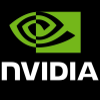Virtual 3D design software designed for collaborative use
Virtual 3D design software designed for collaborative use
Vote: (1 votes)
Program license: Trial version
Developer: Nvidia
Works under: Windows
Vote:
Program license
(1 votes)
Trial version
Developer
Nvidia
Works under:
Windows
Pros
- Advanced GPU sharing capabilities using NVIDIA GRID vGPU
- Seamless integration with VMware Horizon for a unified workspace
- Robust security for 3D data and design protection in the datacenter
- Facilitates real-time collaboration and centralizes resources
- Effective cost management by reducing the need for individual high-end workstations
Cons
- High initial setup cost for enterprises not already invested in VDI
- May require a learning curve for IT teams to manage and optimize
- Dependent on network stability for performance
Seamless Integration of Graphics and Virtualization
The partnership between NVIDIA and VMware has resulted in a highly competent solution for virtual desktop infrastructure (VDI) environments. This combination aims to tackle the challenges pertaining to managing and delivering high-end graphics through virtual setups which are often utilised in industries such as manufacturing, design, and architecture.
High-Performance Virtualization
Leveraging NVIDIA GRID vGPU technology, the solution provides a means for businesses to offer employees access to graphically intensive applications, such as CAD software, without the need for high-end workstations. VMware Horizon adds a layer of convenience by being built on top of vSphere, offering a single unified workspace for all Windows and web resources.
NVIDIA GRID vGPU allows for multiple virtual workstations to access the power of a single GPU, effectively optimizing resources while maintaining an exceptional graphics experience. This is a game-changer for companies that require concurrent access to graphics applications by various users.
Security and Collaboration
Security is a paramount concern for businesses dealing with sensitive data. The NVIDIA + VMware solution addresses this by securely delivering 3D datasets and designs from the data center. Such an approach ensures that intellectual property is safeguarded within a controlled environment, and yet remains fully accessible to authorized individuals.
Real-time collaboration is another cornerstone of this product. By centralizing designs and 3D models, product teams, contractors, and partners can all collaborate efficiently, working on the most current versions without the usual hassles of file sharing and version control.
Cost Management and Accessibility
In terms of cost management, the use of virtualized GPU technology means businesses can avoid the expense of purchasing high-powered workstations for each user. This technology also paves the way for businesses to faster time-to-market for their products, as it allows for swift and flexible access to design models anytime and anywhere. Such accessibility is invaluable in today’s globalized industry where teams often work across different time zones and locations.
Driver Support and Performance
A notable strength of the NVIDIA GRID graphics drivers is their robust performance in VDI environments. The drivers are tested and supported by leading 3D applications, ensuring that there is minimal latency or visual lag, which is crucial when working with detailed 3D applications in manufacturing and similar sectors.
Conclusions
In summary, the NVIDIA and VMware solution provides a highly scalable, secure, and cost-effective way of delivering GPU-accelerated virtual desktops and applications. It stands out for its ability to let multiple users simultaneously share the power of GPUs without sacrificing performance, alongside enhancing security and fostering collaboration among teams.
Pros
- Advanced GPU sharing capabilities using NVIDIA GRID vGPU
- Seamless integration with VMware Horizon for a unified workspace
- Robust security for 3D data and design protection in the datacenter
- Facilitates real-time collaboration and centralizes resources
- Effective cost management by reducing the need for individual high-end workstations
Cons
- High initial setup cost for enterprises not already invested in VDI
- May require a learning curve for IT teams to manage and optimize
- Dependent on network stability for performance




